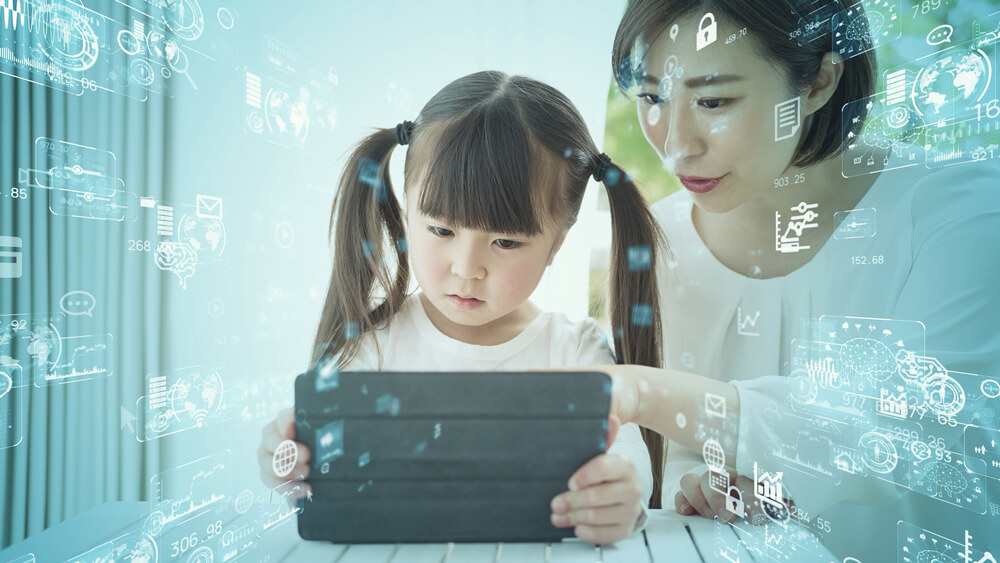For better or for worse, artificial intelligence is everywhere. So, should we embrace it in the classroom? Here’s how some Early Childhood Centres are potentially adopting artificial intelligence to tailor their curriculum and streamline daily tasks.
Lincoln Bridge Tweet
In simple terms, artificial intelligence (AI) is a technology that performs tasks we’d normally attribute to human intelligence. It can understand language, solve problems, learn, and even take on creative tasks like storytelling.
You might not think AI would have a place in early education, where human interaction and relationships are fundamental to the cognitive, emotional and mental health of the children in care.
But, what ECEC operators and educators are realising is that AI can also collect and analyse data that helps them tailor the educational experiences to student’s needs and capabilities.
In this blog:
5 ways AI can help in the ECEC classroom
There are multiple ways AI can be used as a tool in ECEC to improve learning outcomes:
- Customised learning programs: AI can analyse data that includes students’ needs, goals and abilities, and adjust the content based on the child’s responses. It can advise teachers on resources and activities that match the child’s learning style and suggest improvements in the difficulty and pace of the content.
- Creating new content: One area that AI is progressing in quickly is custom content. AI can generate images, videos, quizzes, games and simulations for any prompt. It can easily translate text into different languages and formats, making educational content more accessible and inclusive.
- Encourages critical thinking: Using AI to discover new topics and themes can become a classroom activity that uses critical thinking. Students can learn to find resourceful terms to prompt the AI into giving the answer they want and customise subsequent questions to gather more information.
- Automation of administration tasks: repetitive and time-consuming tasks can be automated by AI. For example, AI can produce summaries and reports based on information that’s inputted into learning programs about child progress, the curriculum and learning outcomes. It can even manage daily tasks such as absences and scheduling.
- Prepares children for an AI-driven world: As AI becomes increasingly integrated into daily life, it’s important children are taught how to use its technology appropriately and with good moral values. For instance, AI can be an excellent tool for research and citing source materials. But, it can also be used to write assessments, calculate maths problems and create digital artwork, all of which impede student learning and creativity.
From a macro perspective, AI can help governments and local councils identify areas where early childhood care is needed, or resources are thin. It can analyse data on childcare centres in comparison to the local population and projected birth trends and recognise potential issues in the supply of quality childcare across a five- to ten-year span.
AI can also facilitate professional development for teachers that can be rolled out state-wide and customised for different communities and cultures.
AI is also a new technology with potential risks
AI in education is in its very early stages. It requires immense amounts of research and experimentation, and an awareness of privacy and security – especially if camera monitoring is involved down the track.
There are potential dangers with AI. It should never be intended to replace educators, who are essential for human interaction, guidance, care, feedback and emotional support for young children. It should be considered a tool that helps educators achieve better outcomes and release time for them to spend with their students.
Here are some questions to think about:
- In a setting where each child has their own unique personality, learning style and challenges, how can we make sure AI doesn’t interfere with the fostering of human interaction, collaboration and social skills?
- How can early childhood educators design curricula and pedagogies that integrate AI?
- How can we develop critical thinking and digital literacy skills among educators and staff?
- How can we integrate AI without fostering a culture of immediate gratification in the next generation?
The world is only scratching the surface of our new AI-driven society. The integration of AI has the potential to save time, improve quality of care and upskill educators in resourceful ways. It’s an area that will likely see tremendous innovation over the coming years.






